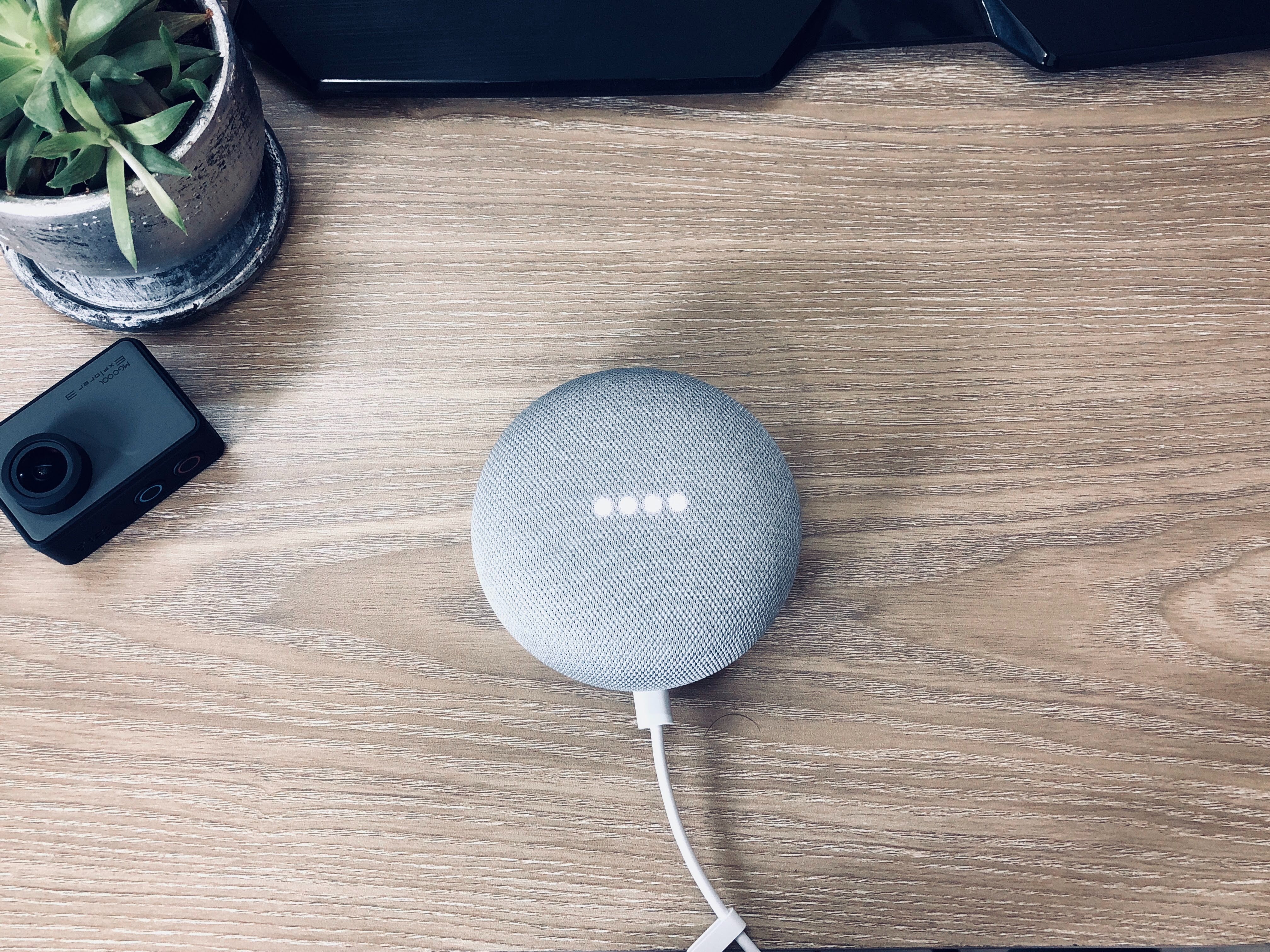How smart speakers work

The meteoric growth in wireless internet-enabled consumer electronics has brought us tantalisingly close to the prospect of a smart home. Formerly passive offline services like lighting, kitchen appliances and home security can now be centralised and managed over WiFi, using a voice-controlled smart speaker interface. And if your eyes glazed over at that last sentence, it’s worth taking a few minutes to learn more about smart speakers…
What are smart speakers?
At their simplest, they’re web-enabled sound systems, capable of playing radio stations or music from streaming services on demand. However, these interfaces are capable of far more than just playing music. They increasingly function as the control centre for other web-enabled hardware, making them the nerve centre of a smart home.
Okay, what’s a smart home?
It’s a property in which multiple electronic devices are web-enabled and controlled via voice commands, or via a software app on a mobile device. Each device will connect to the property’s broadband wirelessly, sending and receiving data across the internet while also handling some processes locally on the device. The latter is known as edge computing.
What can these devices do?
Different smart speakers offer varying levels of interactivity and functionality. Amazon’s Alexa is the market leader, capable of placing online orders, reciting shopping lists and issuing reminders and alarms. It’s used for dictating recipes, playing audiobooks, updating you on news and weather, or communicating with other Alexa devices around the home.
That doesn’t sound very smart.
In isolation, it isn’t. The true potential of smart speakers is unleashed when they’re paired with other appliances. For instance, Amazon also market a range of security cameras and video doorbells. When a camera detects motion, it asks Alexa speakers to notify you verbally, as well as relaying live footage through an app on connected phones and tablets.
What else can they do?
The list is growing all the time. Common services include turning on and off appliances, such as thermostats, lamps and robotic vacuum cleaners. This is especially useful for people with disabilities, regular travellers keen to maintain a sense of occupancy in an empty home, and office workers who want the lights on and the oven pre-heated when they come in at night.
Do smart speakers need special programming?
Once a smart speaker is paired with another compatible device, the two should interact smoothly. However, you may need to issue instructions slowly and clearly. The Google Home platform can support multiple instructions in a single instruction (“close the curtains and put the kettle on”), whereas other smart speakers require individual commands.
Who manufactures smart speakers?
Smart speaker companies include software giants Amazon and Google, alongside established audio manufacturers Sonos, Denon, Bose and Belkin. Chinese brands (Xiaomi, Baidu) are also muscling in. Audio manufacturer products typically rely on either Google Home or Alexa, while Apple’s HomePod range of speakers utilises Apple’s proprietary Siri interface.
Do I need an actual speaker?
The term ‘smart speaker’ evolved from the previous title of ‘virtual assistant’, as a catch-all for any voice-controlled smart device capable of controlling other web-enabled hardware. Over 150 products on sale in the UK include Alexa functionality, many of which aren’t speakers. Other examples include TVs, PCs, headphones and even vehicles.
Is this technology future-proof?
Smart speaker sales have flatlined as the market approaches saturation. Amazon’s Alexa division lost $10bn in 2022 alone, which is clearly unsustainable, so there’s no guarantee any of today’s platforms will survive long-term. Always ensure third-party hardware is compatible with your preferred speaker brand before investing in either platform.
Back to Latest Posts




